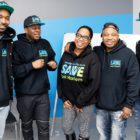
Opinion: For Community Policing to Work, We Need Investment, Stronger Partnerships
|
Since COVID-19 hit, communities like New York City's East Harlem have been dealing with multiple diseases: a deadly virus, the ongoing effects of systemic racism and gun violence.
Stand Against Violence East Harlem (SAVE), a Cure Violence program run by Getting Out and Staying Out (GOSO), has worked to address gun violence in its East Harlem neighborhood for many years. We have viewed gun violence as a public health issue, one that must be treated in order to change community norms.
When you look beyond the headlines about gun violence in New York City and actually spend some time in neighborhoods like East Harlem, it is clear that what our community doesn’t need is increased policing and incarceration — what we need is more basic resources and opportunities.
According to a recent study by the Center for Court Innovation — and as we see at GOSO — an overwhelming number of 16- to 24-year-olds who carry guns have been subject to trauma and violence themselves. This history, along with arrests for minor, nonviolent offenses, far too many of which lead to needless incarceration, can start a cycle that eventually escalates. This is why we must focus on treatment and investment, not just law enforcement. The Cure Violence model works to change attitudes and connect at-risk individuals to resources, with staff living in the communities where they work.